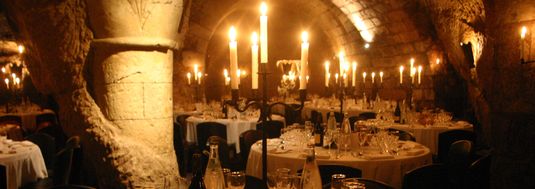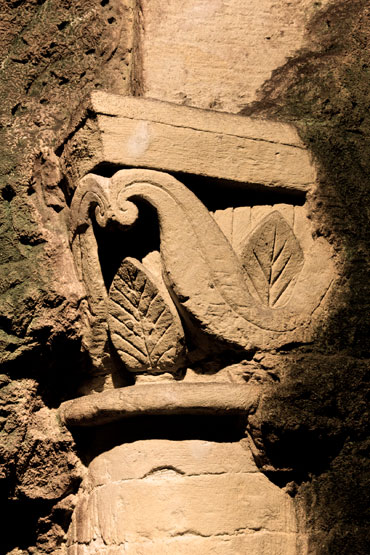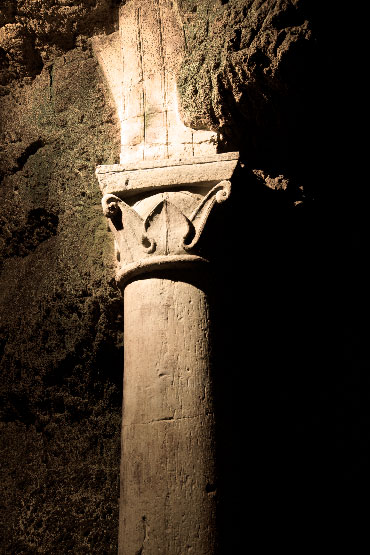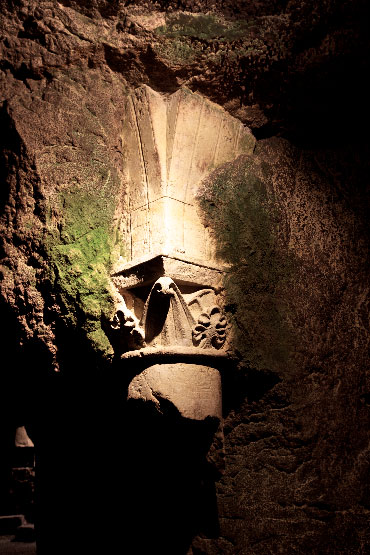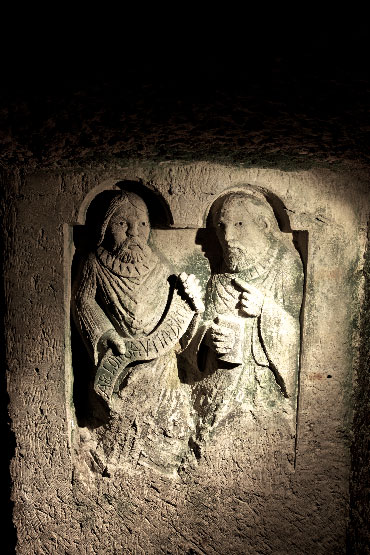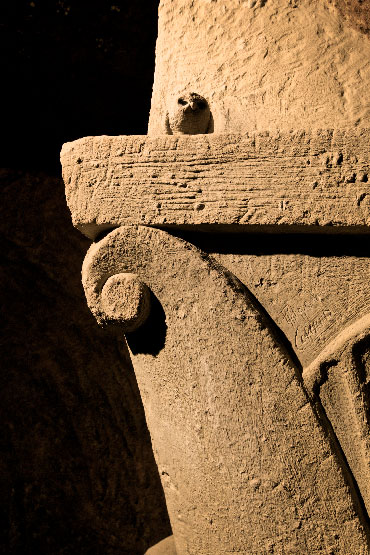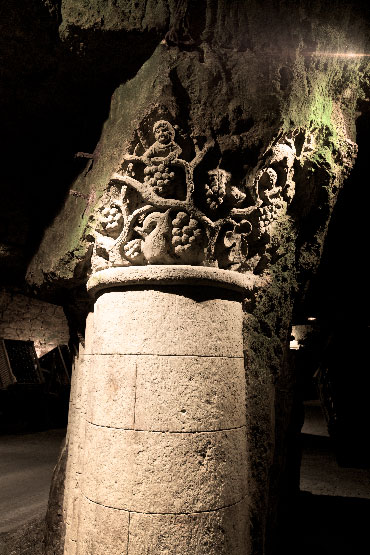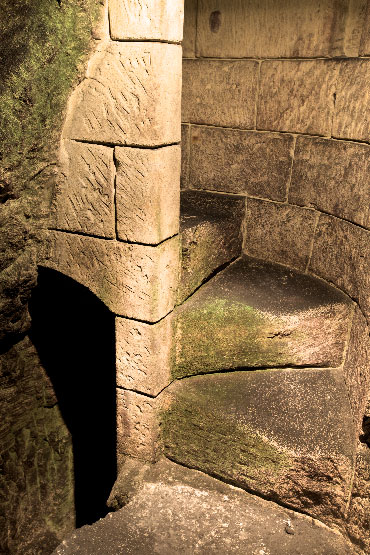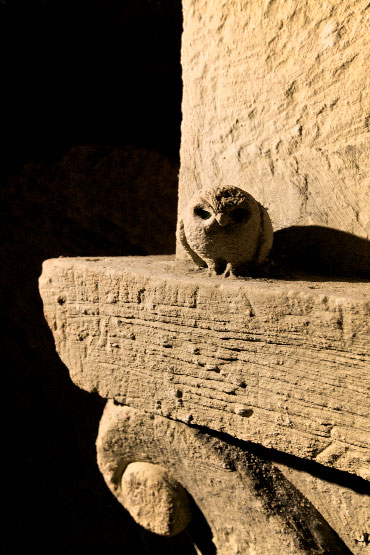The sunken cathedral
The geological adventure
About 180 million years ago, the sea covered the entire Loire Valley and the Parisian region. It was shallow, with warm and turbulent waters, but rich in organisms that formed a large source of sedimentary deposits.
A long marine sedimentation of clays and limestones began and accumulated on the Hercynian basement for 40 million years. At the end of the Jurassic, waters receded but the region was flooded again during the Cretaceous era, a hundred million year ago. In very deep waters, a chalky limestone is deposited which is sometimes more than forty meters thick and much harder than ordinary chalk: the white and yellow tuffs.
At that time, the climate of the region was tropical like the one of Central America, with a dense equatorial forest, of which fossil researchers still find traces. The formation of the present landscape of the Loire Valley began 2 million years ago.
The polar cap is not far away, and the whole region, which was covered with palm trees some 20 million years ago, is now a tundra. The valleys eroded by the alternation of glacial and temperate climates have deepened, capturing the alluvial network of the Massif Central to the west. The landscape is definitely formed: the capricious Loire River flows along meanders that alternate with tufa slopes that are more resistant to erosion.
The climate warms up towards 1000 years before J.C, stabilizes in this soft and temperate atmosphere which we know today.
History of our cellars
A thousand years ago, the history of our cellars began with the era of the builders, and among the very first, the monks of Saint-Florent, driven out of the first Donjon of Saumur by Foulques Nera in 1025. They settled on the heights overlooking the Thouet river and dug the first galleries to extract the tufa stone which was used to build the abbey "La Belle d'Anjou" consecrated in October 1040 and which greatest influence was in the 12th century.
Bouvet-Ladubay cellars are the cellars of this abbey.
The spirit of fire
Philippe Cormand has sculpted with emotion and talent these fragments of monuments engraved in the stone for thousands of years.
These elements of buildings born from poetry, honour the memory of quarrymen, stone carvers and sculptors, those who shaped the heritage of the Loire Valley classified by UNESCO as World Heritage of Humanity.


